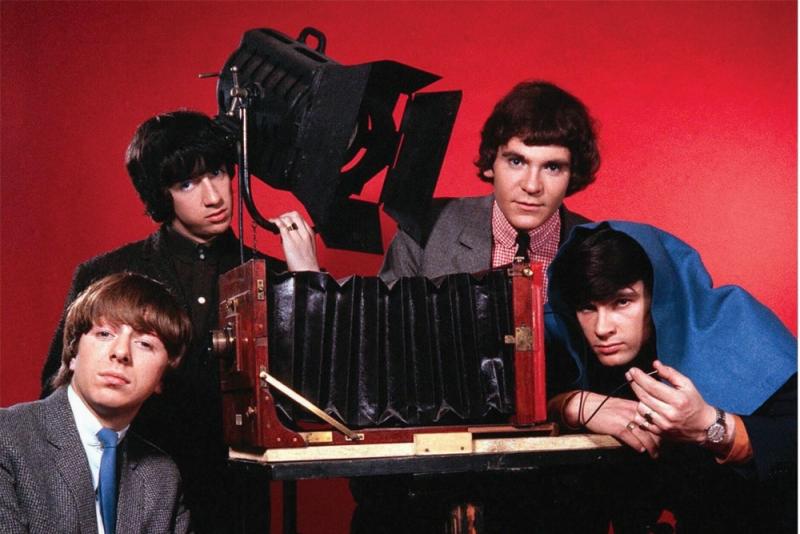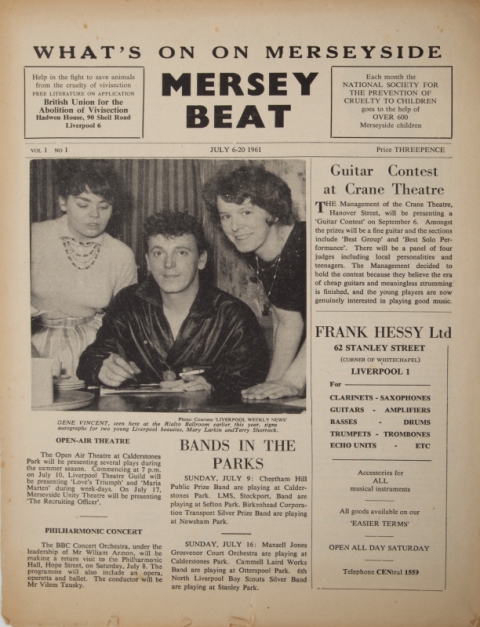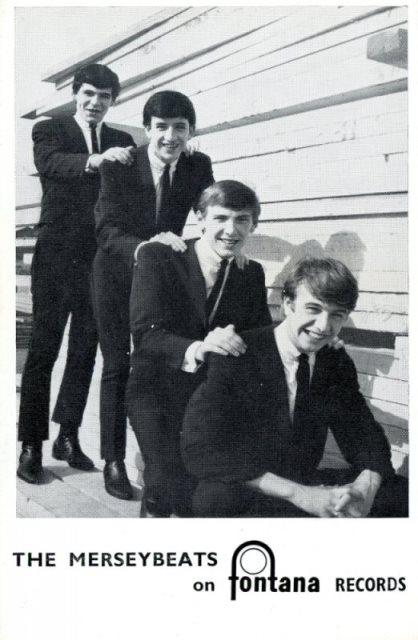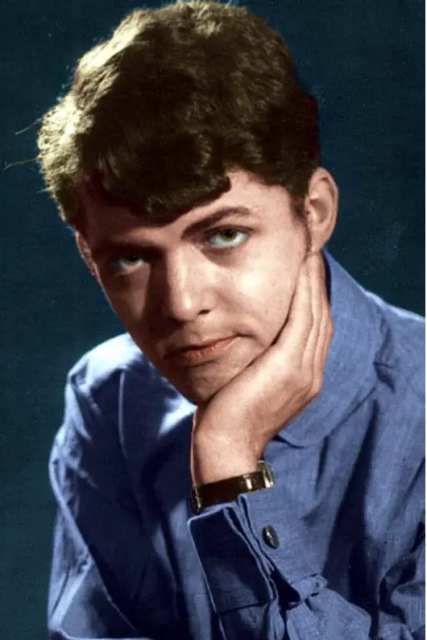Music Reissues Weekly: Let's Stomp - Merseybeat and Beyond | reviews, news & interviews
Music Reissues Weekly: Let's Stomp - Merseybeat and Beyond
Music Reissues Weekly: Let's Stomp - Merseybeat and Beyond
Exhaustive entry point into the scene which birthed The Beatles

The words “Mersey” and “beat” were first publicly paired-up in July 1961 when a newspaper titled Mersey Beat went on sale in Liverpool. The debut issue – dated July 6-20 1961 – was distributed to newsagents. Its editor, art student Bill Harry, personally delivered copies to 28 other shops. It was also on sale at local clubs and jive halls. The NEMS store’s Brian Epstein took 25 copies of the first issue. The print run was 5000 copies.
Buyers saw a mast head saying “What’s On In Merseyside”. The front cover had a picture of Gene Vincent taken when he was in Liverpool alongside trails for forthcoming orchestral and theatrical productions. Inside, a short piece on singer Cilla Black and a whacky contribution by John Lennon on his band titled “Being a short diversion on the origins of The Beatles”. Harry and Lennon had been at art school together. In time, Mersey Beat would solely be devoted to the scene from which Cilla Black and The Beatles had sprung. The UK gained its first local music paper.
 Mersey Beat was a smart title. There was the sense of beat as in police beat: the paper was nosing around the Mersey area. There was also beat, as in music. The two words were not yet collapsed into one, and weren’t yet specific musical signifiers. How that happened is fascinating.
Mersey Beat was a smart title. There was the sense of beat as in police beat: the paper was nosing around the Mersey area. There was also beat, as in music. The two words were not yet collapsed into one, and weren’t yet specific musical signifiers. How that happened is fascinating.
A first sign of the resonance of the title Harry chose came in February 1962, when Cavern Club DJ Bob Wooler renamed local band The Mavericks without telling them beforehand. They first knew of the change after seeing the poster for a Wooler-promoted show they were booked for. Wooler was asked why they weren’t on the bill. He told them they were – but as The Mersey Beats. Bill Harry had given permission to use his paper’s name as he thought it would be good promotion.
After The Beatles broke through nationally, the name of Harry’s publication was a potent brand. In July 1963, Oriole Records released the two This Is Mersey Beat albums. Harry wrote the liner notes for both. The Mersey Beats were included – still two words. Yet when their first single, “It's Love That Really Counts”, came out on Fontana records in August 1963 their name appeared on the label as The Merseybeats – one word. As The Mersey Beats, they played shows in September, October and December 1962. They were still billed live as The Mersey Beats in February and August 1963. Their label made the contraction, maybe as copyright reasons prevented the use of the paper's exact name.
As the band name and the This Is Mersey Beat albums confirmed, what Harry had coined was a convenient tag. But it took a while to catch on. In March 1963, the music paper Disc’s June Harris dubbed what was going on Liverpool “Merseyside Beat”. The same month, John Lennon told her “There are about 20 top beat groups on Merseyside and several others who are not so big. There's plenty of work for all, but the competition is tough. Most of them go for a commercialised, rhythm and blues sound, and they use material by people like Chuck Berry as a base for their own arrangements. At home we call it rhythm and blues with a Merseyside beat, but it's only now that it's beginning to pay off”. In Record Mirror that April, Bill Harry wrote of “the Merseyside Big Beat Scene”.
 By September there was a change to something simpler than "Merseyside beat". June Harris, again in Disc, wrote about The Searchers saying they were integral to “Merseybeat”. Between July’s Oriole albums and September’s Searchers article – whether as "Mersey Beat" or "Merseybeat" – the use of a new geography-specific musical category became widespread. (pictured left, July 1961's first issue of Mersey Beat)
By September there was a change to something simpler than "Merseyside beat". June Harris, again in Disc, wrote about The Searchers saying they were integral to “Merseybeat”. Between July’s Oriole albums and September’s Searchers article – whether as "Mersey Beat" or "Merseybeat" – the use of a new geography-specific musical category became widespread. (pictured left, July 1961's first issue of Mersey Beat)
The developing semantics and etymology were doubtless unnoticed over 1962 and 1963. The first band to emerge which were definitively Merseybeat in the 1963 sense were King Size Taylor & The Dominoes, who began playing live in 1957 – six years before the labelling game, and four before Mersey Beat was on sale. It’s probable they and what emerged in their wake didn’t initially give a hoot about how they may or may not have been pigeonholed. When Howie Casey & The Seniors’s “Double Twist” single and Twist at the Top LP were issued in February 1962 – the first Merseybeat-era records – they were a rocking twist band. So far, there was nothing for them to slot into. It took The Beatles to open the eyes of the rest of the country to what spurred Bill Harry to publication in July 1961. And with that, the arrival of a marketing term for anyone to use as they saw fit.
Nonetheless, two months before The Beatles’s first UK single was in the shops, Record Mirror carried a mind-blowingly prescient article in its 4 August 1962 issue. “Is the Liverpool area the rockingest part of the great British Isles?” asked Norman Jopling. “A publication, Mersey Beat, just arrived, makes me think this is the case. Mersey Beat is designed for beat groups, artists and singers. And they are in apparently great demand...but the supply is there too. For example, groups mentioned include the Tremors, Fabulous Fourtones, the Deltas, the Skyliners, the Tremolos, Rick Shaw & The Dolphins, Ken Tracey and the Beat Squad, the Cyclones, the Dakotas, the Zodiacs, the Midnighters, the Four Jays, Group One, the Bluegenes, Gerry and the Pacemakers, the Solohettes, the Mersey Beats, the Dennisons, the Searchers. Names that intrigue are the Beatles (who were billed as big as Bruce Chanel in Liverpool), the Spidermen, the Morockans”.
 The next year, 1963, was momentous. After The Beatles hit big and Brian Epstein's corralling of his management stable, London labels signed scads of Liverpool acts willy nilly – nothing like this would happen again until 1977’s punk boom. Gerry & The Pacemakers, Billy J. Kramer, The Big Three, The Searchers, The Fourmost, Swinging Blue Jeans and The Merseybeats charted. Inevitably, the gloss faded, styles changed and bands were left behind, and a Liverpool origin ceased being enough. In 1966, The Searchers and Swinging Blue Jeans scored their final chart hits. Sales-wise, their former contemporaries had already faded away. The Merseybeats rebranded themselves The Merseys. The Beatles, of course, were on their own plane. (pictured right, an August 1963 record label postcard for The Merseybeats; suddenly not The Mersey Beats)
The next year, 1963, was momentous. After The Beatles hit big and Brian Epstein's corralling of his management stable, London labels signed scads of Liverpool acts willy nilly – nothing like this would happen again until 1977’s punk boom. Gerry & The Pacemakers, Billy J. Kramer, The Big Three, The Searchers, The Fourmost, Swinging Blue Jeans and The Merseybeats charted. Inevitably, the gloss faded, styles changed and bands were left behind, and a Liverpool origin ceased being enough. In 1966, The Searchers and Swinging Blue Jeans scored their final chart hits. Sales-wise, their former contemporaries had already faded away. The Merseybeats rebranded themselves The Merseys. The Beatles, of course, were on their own plane. (pictured right, an August 1963 record label postcard for The Merseybeats; suddenly not The Mersey Beats)
Despite its dwindling standing, the spell cast by the Merseybeat era did not fade away. In 1974, inspired by Lenny Kaye’s Nuggets, United Artists A&R man Andrew Lauder compiled the seminal-for-real double-LP compilation Merseybeat ‘62-’64. At or by this point, for UA, he was also behind records by Brinsley Schwarz, Can, The Flamin’ Groovies, Hawkwind, Neu! and other wonderful bands. The perceptive Lauder saw the value in recontextualising the past.
Other Merseybeat collections would follow. Amongst the most significant are the three Unearthed Merseybeat CDs released over 2003 to 2005. When Lauder was later at Edsel Records, he was still flying the flag with albums dedicated to The Big Three, The Escorts, The Merseybeats and The Mojos.
Now, the three-CD, 93-track clamshell set Let’s Stomp! Merseybeat And Beyond – 1962–1969 has arrived. As ever, licensing restrictions mean The Beatles are not here but it’s a fine overview taking it to beyond the boom years – confirming that creativity in Liverpool did not stop because the ball was being held elsewhere.
 This is confirmed by The Kirkbys's amazing, Revolver-esque “It’s a Crime” (released September 1966), Wimple Winch’s ever- arresting “Rumble on Mersey Square South” (January 1967) and The 23rd Turnoff’s introspective psychedelic gem “Michael Angelo” (September 1967): all on Disc Three. Turning the clock back, Disc One opens with a nine-track burst of 1962-1964 Merseyside at its rockingest: from Lee Curtis & The All Stars’s “Let’s Stomp” to The Undertakers’s “Just a Little Bit”, each is force-ten sensation. Bob Wooler dubbed The Big Three “the boys with the Benzedrine beat” but Wailin’ Howie Casey & The Seniors’s “Double Twist” is so fast, so manic, they could have had that handle too. (pictured left, Billy Harry c. 1964)
This is confirmed by The Kirkbys's amazing, Revolver-esque “It’s a Crime” (released September 1966), Wimple Winch’s ever- arresting “Rumble on Mersey Square South” (January 1967) and The 23rd Turnoff’s introspective psychedelic gem “Michael Angelo” (September 1967): all on Disc Three. Turning the clock back, Disc One opens with a nine-track burst of 1962-1964 Merseyside at its rockingest: from Lee Curtis & The All Stars’s “Let’s Stomp” to The Undertakers’s “Just a Little Bit”, each is force-ten sensation. Bob Wooler dubbed The Big Three “the boys with the Benzedrine beat” but Wailin’ Howie Casey & The Seniors’s “Double Twist” is so fast, so manic, they could have had that handle too. (pictured left, Billy Harry c. 1964)
Also confirmed is the assimilation of Liverpool bands into the London-based music business. In sequence, three tracks on Disc One feature session guitarist Jimmy Page: The Dennisons’s “You Don’t Know What Love is” (April 1964), King Size Taylor’s “Somebody’s Always Trying” (July 1964) and Billy Fury’s “Nothing Shakin’ (But the Leaves on the Trees)” (April 1964). London producers were going to do things their way.
The appearance of Billy Fury induces an eyebrow raise about the track selection. He was Liverpudlian and groups in the city did look to him as an inspiration, but his rise was nothing to do with what became Merseybeat. The same, but without the group-inspiring aspect, also applies to The Vernons Girls, Lyn Cornell, The Breakaways, Samantha Jones (all of whom are interrelated) and The Satin Bells, who are all also included. Kudos for including tracks first heard on the obscure Beat Waves Across The Mersey CDs, but could space have been found for the fantastic Chick Graham & The Coasters single, psychedelic mavericks The Klubs and something from the Koobas’s LP?
Whatever the niggles, Let’s Stomp! Merseybeat And Beyond – 1962-1969 is an exhaustive entry point into what, in the pages of Record Mirror in April 1963, the dynamic Bill Harry described as "My Rocking City".
- Next week: Tribal Rites Of The New Saturday Night - eye-opening look at the birth of disco music
- More reissue reviews on theartsdesk
- Kieron Tyler’s website
Share this article
The future of Arts Journalism
You can stop theartsdesk.com closing!
We urgently need financing to survive. Our fundraising drive has thus far raised £49,000 but we need to reach £100,000 or we will be forced to close. Please contribute here: https://gofund.me/c3f6033d
And if you can forward this information to anyone who might assist, we’d be grateful.

Subscribe to theartsdesk.com
Thank you for continuing to read our work on theartsdesk.com. For unlimited access to every article in its entirety, including our archive of more than 15,000 pieces, we're asking for £5 per month or £40 per year. We feel it's a very good deal, and hope you do too.
To take a subscription now simply click here.
And if you're looking for that extra gift for a friend or family member, why not treat them to a theartsdesk.com gift subscription?
more New music
 Music Reissues Weekly: Joe Meek - A Curious Mind
How the maverick Sixties producer’s preoccupations influenced his creations
Music Reissues Weekly: Joe Meek - A Curious Mind
How the maverick Sixties producer’s preoccupations influenced his creations
 Pop Will Eat Itself, O2 Institute, Birmingham review - Poppies are back on patrol
PWEI hit home turf and blow the place up
Pop Will Eat Itself, O2 Institute, Birmingham review - Poppies are back on patrol
PWEI hit home turf and blow the place up
 'Fevereaten' sees gothic punk-metallers Witch Fever revel in atmospheric paganist raging
Second album from heavy-riffing quartet expands sonically on their debut
'Fevereaten' sees gothic punk-metallers Witch Fever revel in atmospheric paganist raging
Second album from heavy-riffing quartet expands sonically on their debut
 theartsdesk Q&A: Soft Cell
Upon the untimely passing of Dave Ball we revisit our September 2018 Soft Cell interview
theartsdesk Q&A: Soft Cell
Upon the untimely passing of Dave Ball we revisit our September 2018 Soft Cell interview
 Demi Lovato's ninth album, 'It's Not That Deep', goes for a frolic on the dancefloor
US pop icon's latest is full of unpretentious pop-club bangers
Demi Lovato's ninth album, 'It's Not That Deep', goes for a frolic on the dancefloor
US pop icon's latest is full of unpretentious pop-club bangers
 Yazmin Lacey confirms her place in a vital soul movement with 'Teal Dreams'
Intimacy and rich poetry on UK soul star's second LP
Yazmin Lacey confirms her place in a vital soul movement with 'Teal Dreams'
Intimacy and rich poetry on UK soul star's second LP
 Solar Eyes, Hare & Hounds, Birmingham review - local lads lay down some new tunes for a home crowd
Psychedelic indie dance music marinated in swirling dry ice
Solar Eyes, Hare & Hounds, Birmingham review - local lads lay down some new tunes for a home crowd
Psychedelic indie dance music marinated in swirling dry ice
 The Lemonheads' 'Love Chant' is a fine return to form
Evan Dando finally gets back in the saddle with an album of new tunes
The Lemonheads' 'Love Chant' is a fine return to form
Evan Dando finally gets back in the saddle with an album of new tunes
 Music Reissues Weekly: Evie Sands - I Can’t Let Go
Diligent, treasure-packed tribute to one of Sixties’ America’s great vocal stylists
Music Reissues Weekly: Evie Sands - I Can’t Let Go
Diligent, treasure-packed tribute to one of Sixties’ America’s great vocal stylists
 'Deadbeat': Tame Impala's downbeat rave-inspired latest
Fifth album from Australian project grooves but falls flat
'Deadbeat': Tame Impala's downbeat rave-inspired latest
Fifth album from Australian project grooves but falls flat
 Heartbreak and soaring beauty on Chrissie Hynde & Pals' Duets Special
The great Pretender at her most romantic and on the form of her life
Heartbreak and soaring beauty on Chrissie Hynde & Pals' Duets Special
The great Pretender at her most romantic and on the form of her life
 The Last Dinner Party's 'From the Pyre' is as enjoyable as it is over-the-top
Musically sophisticated five-piece ramp up the excesses but remain contagiously pop
The Last Dinner Party's 'From the Pyre' is as enjoyable as it is over-the-top
Musically sophisticated five-piece ramp up the excesses but remain contagiously pop

Add comment